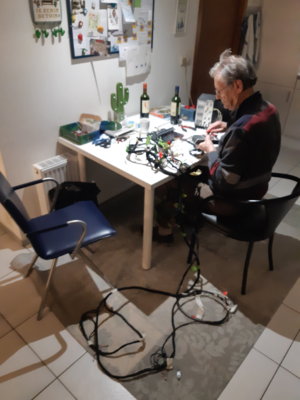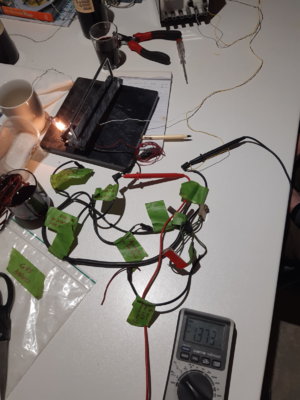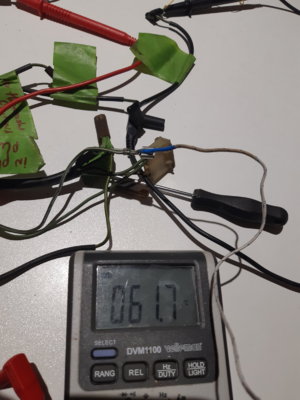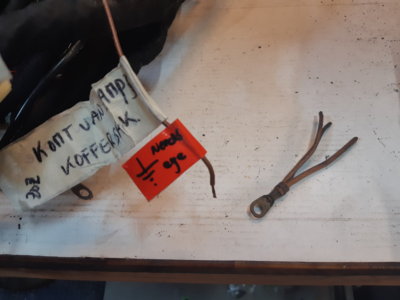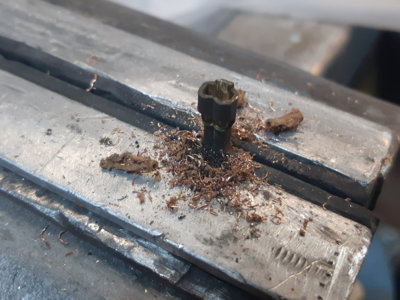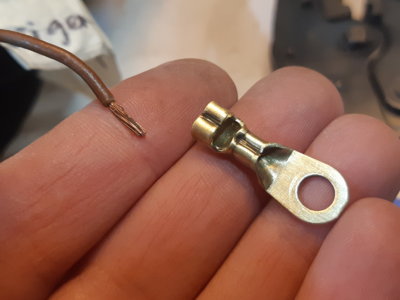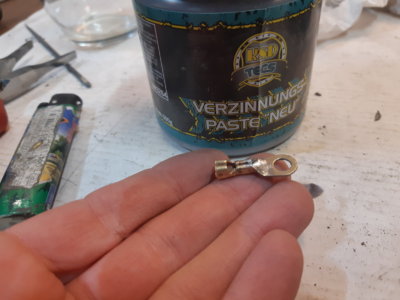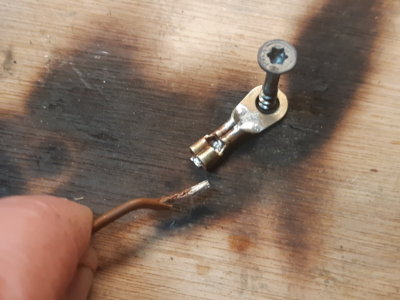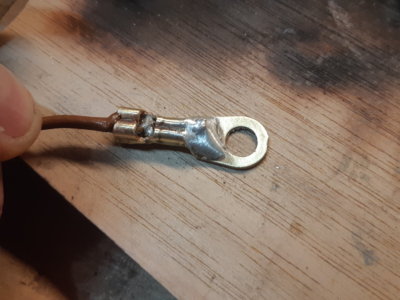As suggested by @Krzysztof, I proceeded to test my wiring harness under load and check for voltage drop.
Aim was to confirm if I had not damaged wiring while crawling around inside my half disassembled car over the past 5 years, and / or kinking it during removing.
As my car was running ok-isch, I'd suspected to perhaps find some gremlins or PO mods.
I also thought is was simply the best time to dig in, especially as they are now clean and on my kitchen table.
Seriously hindered by not speaking the language of electrons; i called in the help of my old man: with his university degree in physics+ 45 year career at Phillips he's better equipped then I am.
So a setup was made using a 55W headlamp, running 3,5 Amps through wire sections and check for voltage drop.
On average we see about 0.05 to 0.2 volt drop from a "connector-wire-connector" chain. However we were surprised to see up to 1,37 volts disappear in places.
Upon further inspection we noticed that these places were all connectors where not a single, but a double wire was crimped. Some were spade connectors with double wire, some were ground-eye's with double wires. Returning parameter was that they all had crimps with two wires.
All crimps with a single wire showed values of max 0.15 volts.
Quite consistent they ALL soak up between 0.8 and 1.37 volts. And logically they start warming up. Enclosed measurements with a thermocouple showing 61,7 celsius/140 Fahrenheit.
This can't be normal I think, is it?
I cannot imagine that an engineer would call it a proud engineering job if connectors continuously operate at 60 celsius.
Now ofcourse I run a big headlamp, so 3,5 amps through wires that are just 1,5mm2 may be a bit overkill, but the heat is localized in the crimp connection itself, not the wire.
In normal car operation most of these wires don't take this much current ; the double spade connector used for the rear lights however does takes 2x21 W + a tiny dashboard light. Is it a real problem? My car did not burn down over the past 45 years.
Is it a test setup error?
Especially the small harness on the carbs, having a few double connectors in series, was loosing the most at 1.37 volts over two double connectors in its chain.
Two ground eyes also have multiple crimped wires, but they additionally also soldered: their voltage drop was significantly less at just 0.05 volts.
Questions to the group:
1. Just run as is and don't worry?
2. Solder up the double crimp connectors having a voltage drop over 0.2 volts?
3. Anything wrong with the test setup?
Aim was to confirm if I had not damaged wiring while crawling around inside my half disassembled car over the past 5 years, and / or kinking it during removing.
As my car was running ok-isch, I'd suspected to perhaps find some gremlins or PO mods.
I also thought is was simply the best time to dig in, especially as they are now clean and on my kitchen table.
Seriously hindered by not speaking the language of electrons; i called in the help of my old man: with his university degree in physics+ 45 year career at Phillips he's better equipped then I am.
So a setup was made using a 55W headlamp, running 3,5 Amps through wire sections and check for voltage drop.
On average we see about 0.05 to 0.2 volt drop from a "connector-wire-connector" chain. However we were surprised to see up to 1,37 volts disappear in places.
Upon further inspection we noticed that these places were all connectors where not a single, but a double wire was crimped. Some were spade connectors with double wire, some were ground-eye's with double wires. Returning parameter was that they all had crimps with two wires.
All crimps with a single wire showed values of max 0.15 volts.
Quite consistent they ALL soak up between 0.8 and 1.37 volts. And logically they start warming up. Enclosed measurements with a thermocouple showing 61,7 celsius/140 Fahrenheit.
This can't be normal I think, is it?
I cannot imagine that an engineer would call it a proud engineering job if connectors continuously operate at 60 celsius.
Now ofcourse I run a big headlamp, so 3,5 amps through wires that are just 1,5mm2 may be a bit overkill, but the heat is localized in the crimp connection itself, not the wire.
In normal car operation most of these wires don't take this much current ; the double spade connector used for the rear lights however does takes 2x21 W + a tiny dashboard light. Is it a real problem? My car did not burn down over the past 45 years.
Is it a test setup error?
Especially the small harness on the carbs, having a few double connectors in series, was loosing the most at 1.37 volts over two double connectors in its chain.
Two ground eyes also have multiple crimped wires, but they additionally also soldered: their voltage drop was significantly less at just 0.05 volts.
Questions to the group:
1. Just run as is and don't worry?
2. Solder up the double crimp connectors having a voltage drop over 0.2 volts?
3. Anything wrong with the test setup?

